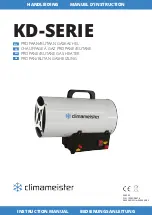
21
Heat & Glo • SL-750TRS-IPI-E, SL-550TRS-IPI-E, SL-350TRS-IPI • 2120-901 Rev. U • 11/13
B. Constructing the Appliance Chase
A chase is a vertical box-like structure built to enclose the
gas appliance and/or its vent system. In cooler climates
the vent should be enclosed inside the chase.
NOTICE:
Treatment of ceiling
fi
restops and wall shield
fi
restops and construction of the chase may vary with the
type of building. These instructions are not substitutes
for the requirements of local building codes. Therefore,
you MUST check local building codes to determine the
requirements to these steps.
Chases should be constructed in the manner of all out-
side walls of the home to prevent cold air drafting prob-
lems. The chase should not break the outside building
envelope in any manner.
Walls, ceiling, base plate and cantilever
fl
oor of the chase
should be insulated. Vapor and air in
fi
ltration barriers
should be installed in the chase as per regional codes for
the rest of the home. Additionally, in regions where cold
air in
fi
ltration may be an issue, the inside surfaces may be
sheetrocked and taped for maximum air tightness.
To further prevent drafts, the wall shield and ceiling
fi
restops should be caulked with caulk with a minimum
Figure 5.2 Clearances to Combustibles
C. Clearances
NOTICE:
Install appliance on hard metal or wood surfaces
extending full width and depth.
DO NOT
install directly
on carpeting, vinyl, tile or any combustible material other
than wood.
WARNING! Risk of Fire!
Maintain speci
fi
ed air space
clearances to appliance and vent pipe:
• Insulation and other materials must be secured to prevent
accidental contact.
• The chase must be properly blocked to prevent blown
insulation or other combustibles from entering and
making contact with
fi
replace or chimney.
• Failure to maintain airspace may cause overheating and
a
fi
re.
of 300ºF continuous exposure rating to seal gaps. Gas
line holes and other openings should be caulked with
caulk with a minimum of 300ºF continuous exposure rating
or stuffed with unfaced insulation. If the appliance is be-
ing installed on a cement surface, a layer of plywood may
be placed underneath to prevent conducting cold up into
the room.
E
H
I
F
G
J
MEASURE FROM TOP
OF UNIT OPENING
OR FROM TOP OF HOOD
*
MINIMUM FRAMING DIMENSIONS
Models
A
B
C
D
E
F
G
H
I
J
DVP Pipe SLP Pipe
Rough
Opening
(Height)
**DVP Pipe SLP Pipe
Rough
Opening
(Width)
Clearance
to Ceiling
Combustible
Floor
Combustible
Flooring
Behind
Appliance
Sides of
Appliance
Front of
Appliance
Rough
Opening
(Width)
Rough
Opening
(Width)
Rough
Opening
(Depth)
Rough
Opening
(Depth)
SL-750TRS-IPI-E
SL-750TRS-E
in.
10
8-5/8
38-1/4
16-1/4
16-1/4
42
32
0
0
1/2
1/2
36
mm
254
219
971
413
413
1067
813
0
0
13
13
915
SL-550TRS-IPI-E
SL-550TRS-E
in.
10
8-5/8
34-3/4
16-1/4
16-1/4
37
32
0
0
1/2
1/2
36
mm
254
219
882
413
413
940
813
0
0
13
13
915
SL-350TRS-IPI
in.
10
8-5/8
32-3/4
16-1/4
16-1/4
34
32
0
0
1/2
1/2
36
mm
254
219
832
413
413
864
813
0
0
13
13
915
* Adjust framing dimensions for interior sheathing (such as sheetrock)
C** Add 12 inches when rear venting with one 90º elbow.
C
B
D
A
















































